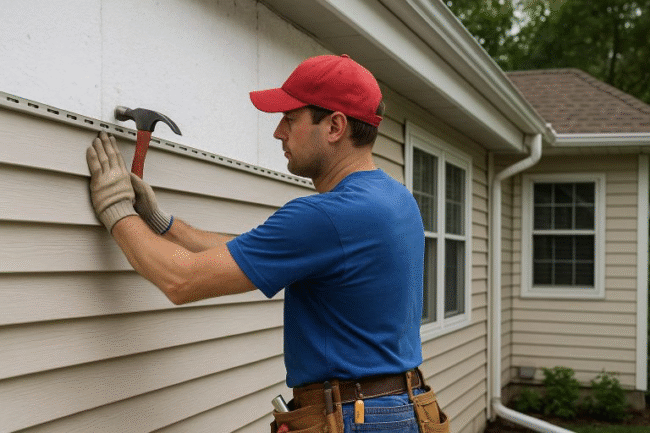
A cozy home starts with smart design choices. Many homeowners want to cut energy bills and keep their homes comfortable. Insulated vinyl siding makes this possible. It improves the look of a home while reducing heat loss.
Among the many energy-efficient siding options, insulated vinyl siding is one of the most practical upgrades for any property. Traditional siding materials do little to block heat or cold. This allows air to escape and raises utility costs. Insulated vinyl siding solves this issue with a built-in layer that keeps temperatures steady inside the home. It reduces the load on heating and cooling systems, saving energy throughout every season. The following sections explain how this siding improves home efficiency, adds comfort, and increases value.
How Insulated Vinyl Siding Works
Insulated vinyl siding includes a foam layer attached to the back of each panel. This foam fills small gaps and stops air from moving through the walls. Creating a tight seal helps maintain a steady indoor temperature. The design prevents heat loss in winter and keeps hot air out in summer.
This structure also strengthens the siding. It stays straight and firm instead of bending or cracking under pressure. The foam backing gives it more support, which helps it last longer. This means fewer repairs and a cleaner look for years.
Main Benefits of Insulated Vinyl Siding
Installing insulated vinyl siding gives homeowners several benefits that improve comfort and reduce expenses.
- Lower Energy Use: The insulation reduces strain on heating and cooling systems, leading to smaller energy bills.
- Better Comfort: Fewer air leaks keep every room at a stable temperature.
- Noise Control: The foam backing softens sounds from traffic or nearby activity.
- Strong Protection: The siding stands up to wind, rain, and sunlight without losing color or shape.
- Eco-Friendly Choice: Lower energy use means less impact on the environment.
Each of these advantages contributes to a home that feels better and costs less to maintain.
Why Vinyl Siding is More Effective
When compared with wood or metal, insulated vinyl performs much better. Wood can swell or rot when exposed to moisture. Metal can dent and conduct heat. Vinyl siding keeps its shape and holds color longer without much care. It provides the charm of painted wood without the extra work.
People exploring energy-efficient siding options will see how vinyl insulation gives steady results. It closes off gaps that let air slip through, improving the comfort level inside the home. Over time, this leads to noticeable savings on energy costs.
Improves Appearance and Home Value
Insulated vinyl siding does more than manage energy. It also boosts a home’s visual appeal. The siding comes in a wide variety of colors and textures that fit modern or classic designs. The smooth surface adds a neat finish to exterior walls. Buyers appreciate this mix of beauty and practicality, which can raise the value of the property.
Insulated vinyl siding helps people create homes that save power and last longer. It lowers utility costs and protects against weather changes. Families gain comfort and peace of mind without heavy maintenance. Choosing this siding shows a commitment to smart living and energy care. It is a simple yet powerful way to build a home that stays efficient through every season.
